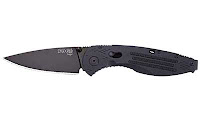What’s your superstition?
On today’s date, many wake up and dread looking at the calendar. Some are riddled by fear while others look at it as another day. Just how did this hullabaloo start over this legendary day? As Survivalists Outfitter unraveled the history of this mystery, we have discovered some fun and entertaining facts to about this freaky Friday date!
How did it all begin?
Although there are a few different theories about how the fear of Friday the 13th came about, one of the more popular beliefs is that it derived from The Last Supper with Jesus and the apostles. There were 12 apostles at dinner and Judas ended up being number 13, after he showed up. Later, Jesus ended up dying on a Friday.
Friggatriskaidekaphobia
Just what is that jumbled mess of letters above? Friggatriskaidekaphobia is the actual name for the fear of Friday the 13th! According to the Stress Management Center and Phobia Institute in North Carolina, an estimated 17 to 21 million people in the U.S. are diagnosed with this phobia. Source: glo.msn.com
More fun Friday facts:
· Airplanes often lack a 13th row
· Many buildings do not have a 13th floor
· A lot of hotels will not have a room #13
· Estimates have suggested that on Friday the 13th, the U.S. economy loses up to 900 million dollars. (Source: glo.msn.com)
· Many Americans will not drive on Friday the 13th
· In the 1880s, The Thirteen Club was formed to expose the superstition that 13 was not unlucky
· On Friday the 13th, Henry Ford did not do business and Franklin Delano Roosevelt eluded travel.
· In 2012, there are three Fridays that fall on the 13th
· Hurricane Charley hit Florida on Friday the 13th
Here are some other top superstitions besides this famous Friday’s date:
· Crossing paths with black cats
· Walking under ladders
· Opening an umbrella indoors
· Breaking a mirror
· Stepping on a crack
Do you know of any more freaky-Friday fears or facts or superstitions? Let us know!
So take along your trusty rabbit’s foot, four-leaf-clover or lucky horseshoe and keep your fingers crossed that this Friday ends up being fantastic!
~Charlene Marie















